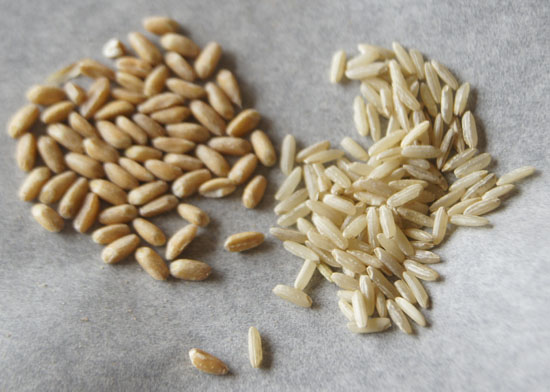Cracked Wheat
In Turkey, we had several meals that included a delicious grain called “cracked wheat”. These cooked grains were big and chewy. When we got home, I bought a package of cracked wheat at a Middle Eastern store, and on the package, under “cracked wheat”, is printed “coarse burghul #3”. From my bulgur post, I knew that burghul is an alternative spelling of bulgur. How does cracked wheat differ from bulgur, or does it differ?
The package of cracked wheat that I purchased is sold under the brand “Ziyad”. They have a website – here is the link to cracked wheat #3. On the web site it says the wheat is parboiled and then dried.
Whole Grain Goodness states that cracked wheat is made from whole wheat grains that have been cracked or ground into smaller pieces, and it is similar to bulgur but is not usually precooked (parboiled). “Many people use cracked wheat as a base, like couscous, serving vegetables or meats alongside it. It can also be used in grain pilafs and multi-grain bread, pancakes, and other grain dishes”.
WiseGeek states that cracked wheat is made from whole wheat kernels that are cracked into smaller pieces. They further state that cracked wheat differs from bulgur in that it is not steamed and toasted before cracking. “Because cracked wheat is made from whole wheat berries, it carries a great deal of nutrition and fiber since it includes the fiber and nutrient rich outer bran and germ of the wheat. For this reason, it is often added to healthy diets, especially those eaten by people who are concerned about heart health.”
According to Wikipedia, accessed 7/2018, cracked wheat is crushed wheat grain that has not been parboiled. On the Wikipedia bulgur entry, they spelled the non-parboiled form “burghol”. But when I search today for “burghol” on the web, nothing comes up.
My conclusion is that the division between bulgur and cracked wheat is blurry. Assume that products called “cracked wheat” may or may not be parboiled – check the package if you are curious. My guess is that “cracked wheat” is used for coarser grinds. When we visited Turkey, the cracked wheat we were served was definitely a coarse grind, like the #3 product I bought here in the US.
The take-home lesson is that both cracked wheat and bulgur both taste wheat-y and nutty and in my opinion, great. The coarser bulgurs/cracked wheats will be marked #3 or #4. Check the package to see how long to cook it. Then, enjoy.
Here is cracked wheat, uncooked:
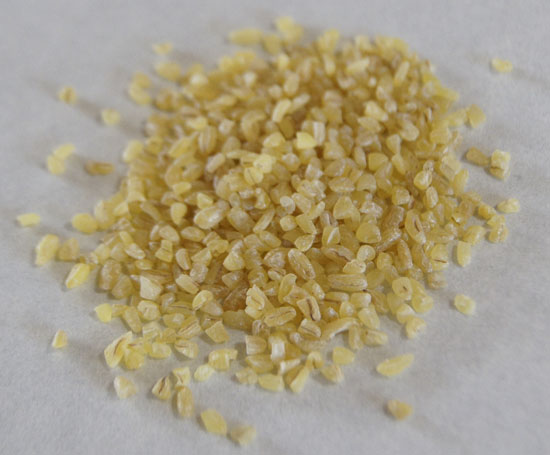 Here is cracked wheat compared to medium grain brown rice:
Here is cracked wheat compared to medium grain brown rice:
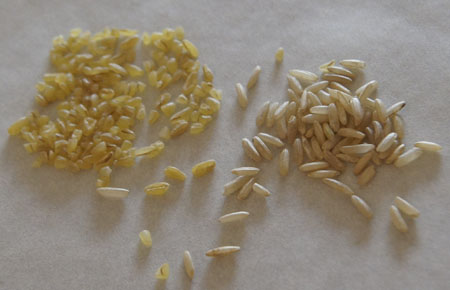
Nutrition
1/4 cup dry cracked wheat has 140 calories, 5 grams fiber, 5 grams protein, some calcium, and an appreciable amount of iron. (Source: Ziyad brands package.) That’s almost exactly like bulgur – only the fiber amount is different.
Cracked wheat, like bulgur, is a whole grain wheat product.
Online sources report the glycemic index of cracked wheat as 46-53, making cracked wheat a medium GI food. (Anything under 55 is pretty good for a grain.)
A good reference for GI of bulgur and cracked wheat: Diet and Fitness Today.
Cooking
| water | time simmering | time standing | ||
| 1 cup cracked wheat #3 | 2 cups | 20 | optional | not necessary |
My package of cracked wheat only gave instructions for a recipe, not basic cooking instructions. So, I just put it in boiling water and checked it: I found it took 20 minutes of simmering to become tender and soak up all the water.
Cooked cracked wheat:
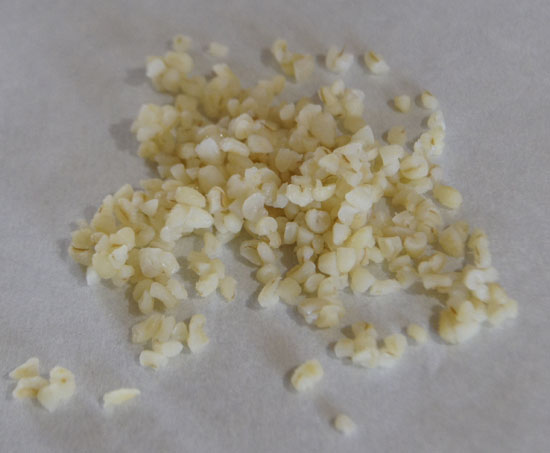
Recipes
In Turkey, cracked wheat was often cooked with onions and tomatoes. The recipe on the package of Ziyad Cracked Wheat that I purchased in a local Middle Eastern store, the cracked wheat is soaked in water and then sauted with onions and garlic in olive oil; bell pepper, water or stock, and a little tomato paste are added; the mixture simmered until the cracked wheat is tender.
Epicurious offers a recipe for a yeast bread. Cracked Wheat Top-Knots call for medium bulgur (“also called cracked wheat”). The bulgur is soaked in hot water before it is added to the yeast dough.
Several sites suggest serving cracked wheat as a breakfast cereal, especially with nuts.
Garlic and Zest’s Mediterranean Cracked Wheat Salad is made with kalamata olives, peperoncinis, radishes, tomatoes, and garbanzos.
Spiced Cracked Wheat and Lentils for Grown-Ups from Food Network is made with jalapenos, turmeric, tomatoes, paprika, ground coriander, cinnamon, and cilantro.
Honey Cracked Wheat bread is another good cracked wheat recipe. It’s in one of my own posts: The Bakery, New and Improved Recipes, Zojirushi America Corporation. In that post I briefly discussed cracked wheat.
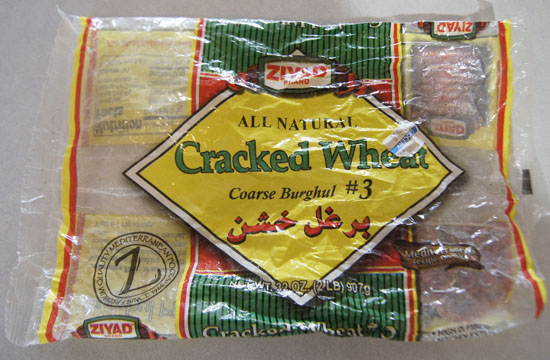


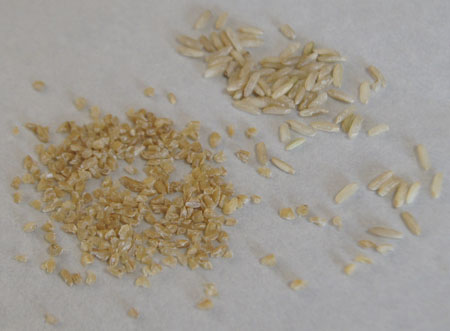
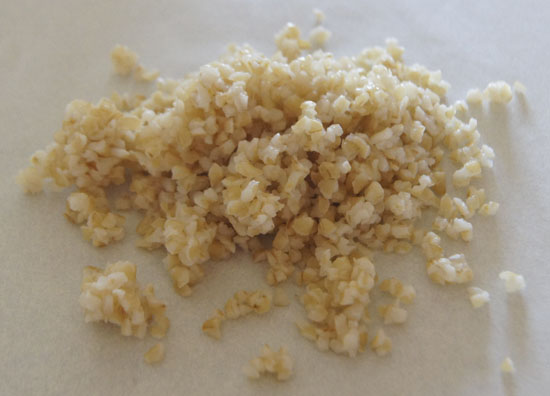
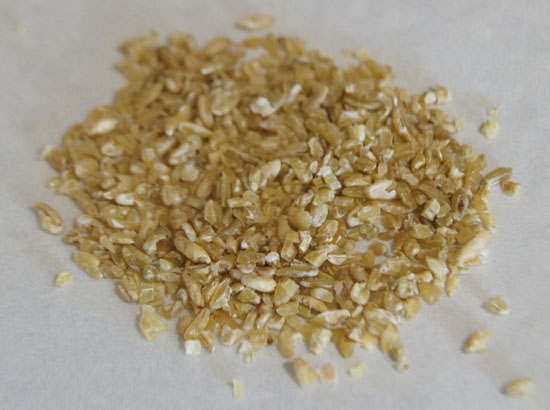 For a size comparison, freekeh next to medium brown rice:
For a size comparison, freekeh next to medium brown rice: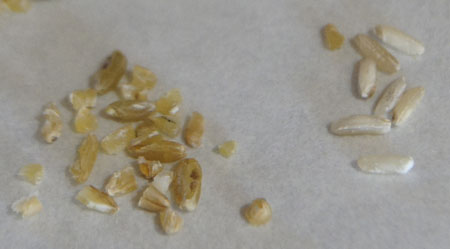
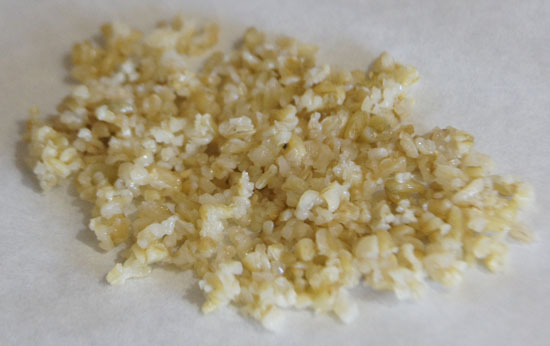
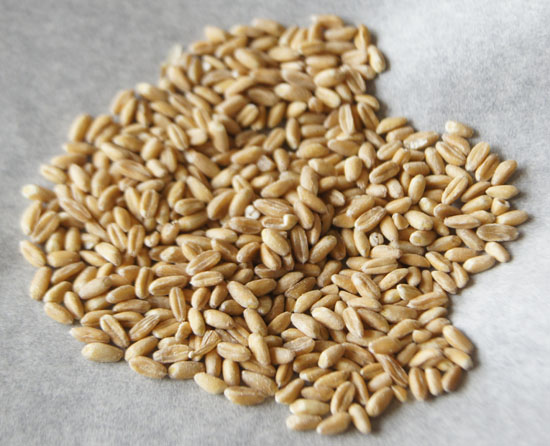 Here it is next to grains of medium brown rice, to show you the size:
Here it is next to grains of medium brown rice, to show you the size: